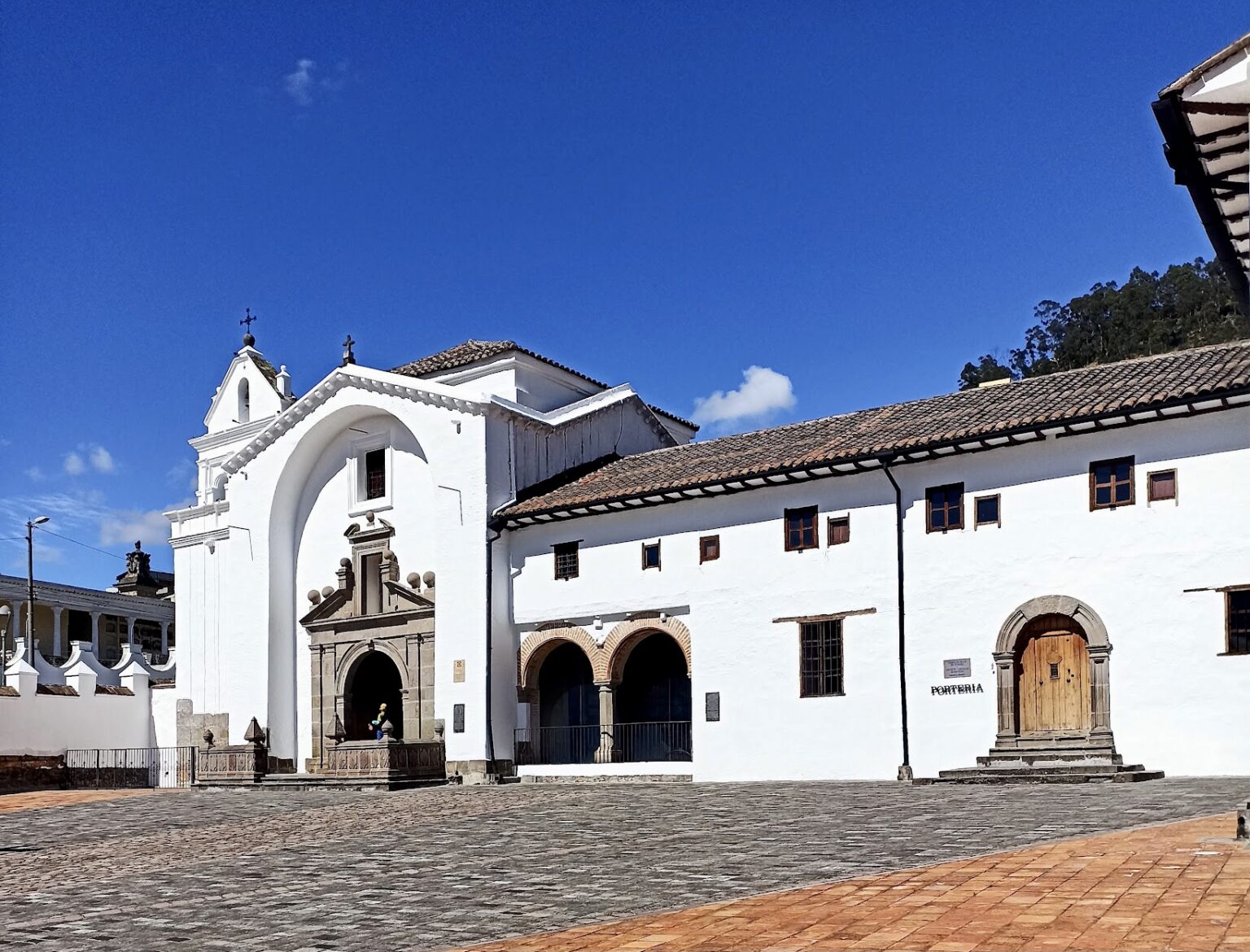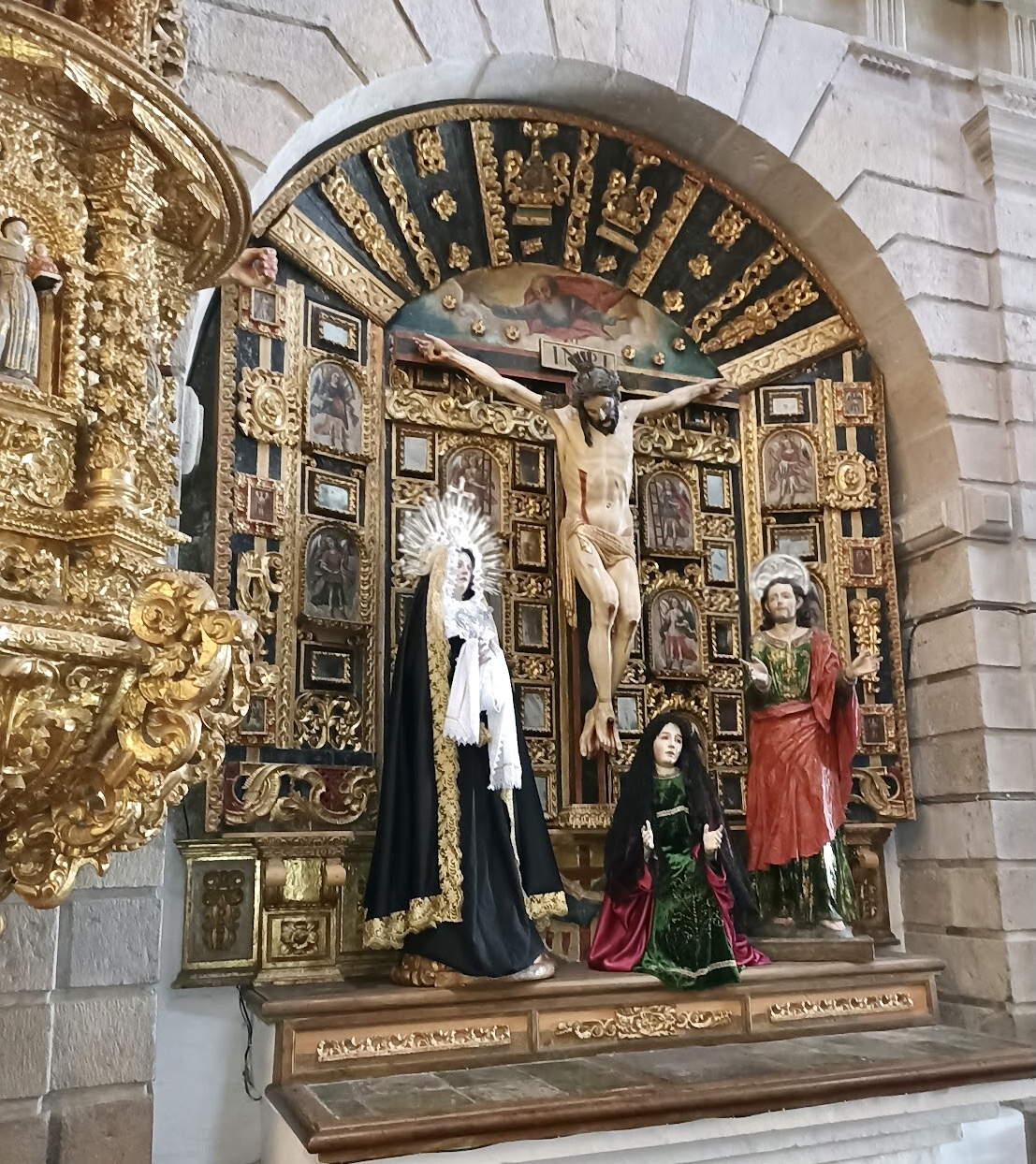Español
La Recolección de San Diego en Quito se inició en 1598 bajo la dirección del padre Bartolomé Rubio, gracias al apoyo del Cabildo y las donaciones de Marcos de Plaza y su esposa, doña Beatriz de Cepeda, sobrina nieta de Santa Teresa. A lo largo de los siglos XVII y XVIII, el convento fue ampliado con terrenos, aguas y solares, consolidándose como un espacio autónomo y contemplativo, con claustros, plazoleta y estructuras que respondían a un modelo de vida cerrado y espiritual.
Durante el siglo XVIII, bajo frailes como Sebastián Ponce de León, Luis Fresnillo y Francisco Blanco del Valle, se definieron la fachada y el interior, incorporando el sagrario, el púlpito barroco y artesonados mudéjares de gran valor. Su patrimonio artístico incluye murales como el de la Virgen de Chiquinquirá y la célebre imagen articulada de Cristo crucificado, ligada a la tradición del “Padre Almeida”. Este conjunto arquitectónico y legendario convirtió a San Diego en un centro de fe y memoria cultural de Quito.


English
The Recollection of San Diego in Quito began in 1598 under the direction of Father Bartolomé Rubio, thanks to the support of the Cabildo and donations from Marcos de Plaza and his wife, Doña Beatriz de Cepeda, great-niece of Saint Teresa. Throughout the 17th and 18th centuries, the convent was expanded with land, water, and lots, consolidating itself as an autonomous and contemplative space, with cloisters, a small plaza, and structures that reflected a closed and spiritual lifestyle.
During the 18th century, under friars such as Sebastián Ponce de León, Luis Fresnillo, and Francisco Blanco del Valle, the façade and interior were defined, incorporating the tabernacle, the Baroque pulpit, and the highly valuable Mudejar coffered ceilings. Its artistic heritage includes murals such as that of the Virgin of Chiquinquirá and the famous articulated image of Christ crucified, linked to the tradition of «Father Almeida.» This legendary architectural complex made San Diego a center of faith and cultural memory in Quito.